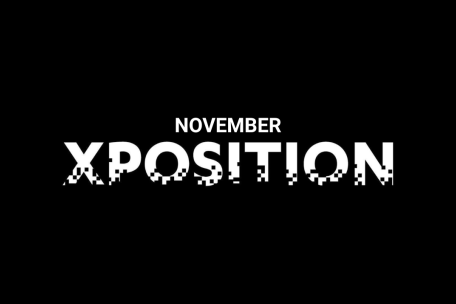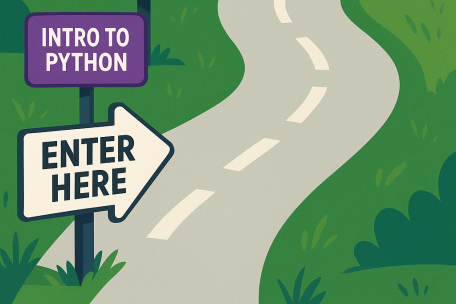
Course Design Within Reach: 5 Questions With Clara Choi
Curriculum decisions are driven by needs we've identified and the broader goal of DataX to support equitable access to data science education across campus.
DataX Instructional designer Clara Choi, crafts engaging learning experiences that incorporate creativity, storytelling, research, interactivity, emotion and visual design.
We sat down with Clara to learn about her artistry in developing technique and narrative into relatable, relevant and memorable content tailored to UCLA students’ needs and goals.
Q: Tell us about yourself and how you got to UCLA DataX?
A: My background is in instructional design. Before joining UCLA in December 2023, I worked for an educational technology startup where I focused on designing professional development courses for K-12 teachers and leaders. While I enjoyed that work, I craved the opportunity to work directly with the people I serve and to be part of the learning ecosystem I help design.
Being part of this university allows me to collaborate with passionate faculty and directly support students in meaningful ways.
Q: What goes into developing a curriculum at UCLA DataX?
A: Curriculum design at DataX is truly a team effort. Overall, the process takes about nine months per course and involves collaboration with multiple partners to create materials, design assessments and build out course platforms.
My instructional design philosophy focuses on addressing the needs primarily of students. It starts with defining the need for a course by identifying gaps or challenges that students face, often based on conversations with faculty—many of whom lead centers and initiatives that work extensively with the L.A. community, student-facing staff and industry professionals. And, of course, I cherish every opportunity to talk directly with students. I love how the DataX Ambassadors Program has allowed me to build direct relationships with undergrad students, which I can leverage to create responsive learning environments to better support their academic growth.
For example, one of the courses we started developing last year is an introductory statistics course tailored for social sciences students. It addresses a specific need identified through conversations with Juliet Williams, Chair of the Social Sciences IDP, ensuring that it is both approachable and relevant to students' interests.
Once we’ve identified the need, we partner with faculty and graduate students to create the course journey. Everything begins with designing a syllabus that outlines the learning outcomes, assignments, course structure, and week-by-week plans. Developing the course journey differs depending on the course goals. For example, for an on-ramp programming course, strategies might include integrating supportive materials like video tutorials, step-by-step guides, and welcome videos to ensure a smooth onboarding process to make the courses accessible and engaging, especially for students who might feel intimidated by data science topics.
This fall, we surpassed expectations debuting a new iteration of “Introduction to Programming and Data Management,” taught by DataX Associate Director of Curriculum and Associate Professor of Higher Education Ozan Jaquette, with a first run of 48 students; and a brand new course, “Causality X,” taught by Professor of Political Science and Statistics Chad Hazlett. Initially we planned to cap it at 25 students, but to meet demand we allowed in 29.
Q: How do you decide what to work on?
A: Curriculum decisions are driven by identified needs, gaps in the existing curriculum and the broader goals of DataX to support equitable access to data science education across campus. We want all UCLA students to graduate with core competencies in data literacy
Since DataX is a relatively new initiative, the process was somewhat ad hoc in the beginning. Initially, we reached out to different departments and stakeholders to gather input and identify needs. For example, some courses emerged from conversations with faculty and deans, while others were influenced by existing data and research on gaps in student preparedness for the job market.
Going forward, we are working on creating more structured processes. We developed the DataX Curriculum Development Program, an official channel for instructors to submit course ideas, potentially supported by a course development grant. This way, faculty can propose ideas that align with departmental needs, and I can partner with them to bring those courses to life. Another is leveraging existing initiatives across campus, such as the Teaching and Learning Center’s Education Innovation Grant, to amplify our reach and effectiveness across campus.
Q: How do you ensure that the content is accessible and engaging for students who may not have a strong background in data or mathematics?
A: Ensuring accessibility and engagement for all students is central to how we design our courses at DataX. For students who may not have received adequate high school instruction in data or mathematics, we focus on creating supportive, approachable and relevant course experiences.
DataX takes steps to front-load support right from the beginning of the course. For instance, our course design might include resources such as video walkthroughs, written guides and detailed instructions on downloading and using software to ensure that students feel confident and prepared. Additionally, we might design onboarding materials, such as a welcome video from the instructor, to create an inviting environment and reduce any intimidation students might feel.
To keep the content relevant, we tailor examples and datasets to the students’ fields of study. In the statistics course for social sciences students, we incorporate examples like income disparities and housing inequalities to make the concepts meaningful and relatable. Activities are often designed to be interactive and practical, such as using probability to evaluate day-to-day decision-making or interpreting real-world datasets to draw conclusions.
We also integrate collaborative opportunities, such as group problem sets, where students can work together and submit one collective solution. This not only promotes peer learning but also fosters teamwork and accountability. The ultimate goal is to create an engaging, student-centered learning journey that is approachable for students of all backgrounds.
Q: What’s in the pipeline for the future? What are you excited about?
A: There’s so much to look forward to at UCLA DataX! Beyond curriculum development, I’m excited about engaging even more directly with students. We’re planning to host focus groups in collaboration with student organizations like the Bruin AI group and the DataX Student Ambassadors Program to better understand their needs and aspirations. I’m passionate about fostering a personal connection with the students we serve and ensuring our work directly supports their learning and career goals.
Overall, the opportunity to build something new, collaborate across disciplines, and create a lasting impact on the UCLA community makes the future of DataX incredibly exciting.
OK, Question 5 ½. Give us a little-known something about you?
A: I was a theater kid growing up and I have performed on stage with incredible actors like Martin Sheen to tell the stories of human rights activists around the world! This background deepens my understanding of how empathy and human connection enhance impactful learning experiences.


